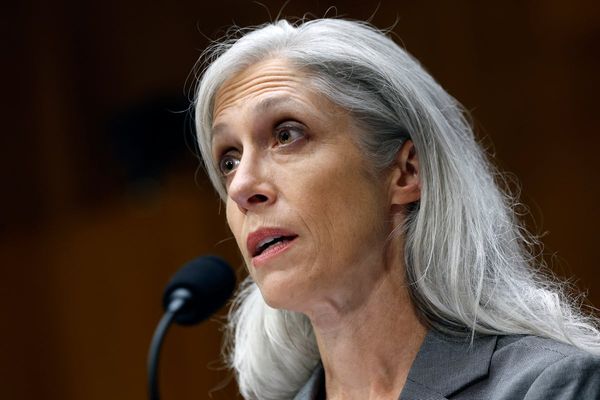U.S.-China trade talks in London have cleared the way for a full resumption of rare-earth exports to the U.S., President Trump said in a Truth Social post early Wednesday. He also indicated that the deal provides for a 55% U.S. tariff on a broad range of Chinese imports, though that doesn't mean tariffs will increase from current levels.
Investors have at least two big questions: First, how sustainable is the deal? The Wall Street Journal reported that China will grant six-month export licenses for rare earths, meaning it will still have leverage to exact concessions from the U.S. The other question is what Beijing will get in return. In particular, will Beijing's tight grip on rare earth magnets force a major relaxation of U.S. export controls on chipmaking equipment and advanced semiconductors produced by Nvidia and others?
The S&P 500 is slipping moderately in afternoon stock market action, after rising early on tame inflation data. Wall Street, which has a three-session winning streak, has enjoyed a sense of calm that, whatever China's asking price, Trump would agree to it to avoid the massive economic fallout in the U.S. that would come if Beijing continues to freeze rare-earth exports.
Tesla Rivals Lead Five China Stocks Near Buy Points
Meanwhile, Nucor is among the worst S&P 500 performers as steel prices tumble on news that the Trump administration is nearing an agreement that would allow U.S. steel imports from Mexico up to a specified quota to face a much lower tariff rate than the current 50%.
U.S.-China Rare Earths Deal: What We Know
Trump said the deal will reverse the State Department's recent move to block educational visas for Chinese students to attend U.S. universities.
As Lutnick described the framework, both sides would take down the non-tariff trade barriers erected recently. That's consistent with The Wall Street Journal reporting on Monday that Trump authorized Treasury Secretary Scott Bessent and fellow U.S. negotiators to walk back recent U.S. moves to suspend exports of jet engines, chip-design software and ethane.
Stocks To Buy And Watch: Top IPOs, Small Caps, Growth Stocks
Before Trump and Chinese President Xi Jinping agreed to the latest round of trade talks, Beijing slammed the Trump administration's May 12 announcement that it would ensure America's "global AI dominance" in part by imposing criminal sanctions on companies "using Huawei Ascend chips anywhere in the world." That suggests a moderation of U.S. policy toward Huawei could be part of the terms.
Possible U.S.-China Deal Surprises
"U.S. restrictions on lower-end AI chips and other semiconductors could be relaxed, though we anticipate cutting-edge chips and advanced manufacturing gear will remain under more stringent control," wrote Ulrike Hoffmann-Burchardi, UBS Global Wealth Management's chief investment officer for global equities.
Yet some on Wall Street think Beijing is in position to demand a much broader reversal of chip export controls because a shortage of rare earths threatens to hit the brakes on U.S. manufacturing of autos, high-tech and defense gear.
It's "unrealistic," wrote Christopher Wood, global head of equity strategy at Jefferies, "for Washington to assume that China is going to ease up controls on rare earths if the U.S. does not do the same as regards exports of U.S. tech products."
China views U.S. export controls on chips and chip equipment "as the equivalent of a declaration of economic war against China, since it amounts to a deliberate effort to prevent the upgrading of the mainland economy."
U.S.-China Ceasefire Was Set To End Aug. 12
The focus of U.S.-China trade talks has clearly shifted from tariffs to export controls. Both sides agreed to slash tariffs by at least 100% of the value of imports in the truce announced on May 12. Broad-based U.S. tariffs imposed on Chinese imports in President Trump's second term now stand at 30%, down from a peak of 145%.
Beijing, which retaliated with a tariff as high as 125%, agreed to cut it to 10%.
When the U.S.-China ceasefire ends, the default plan was to impose an additional 24% reciprocal tariff on China, as announced on April 2. That's off the table in the deal framework reached in London.
Keep in mind that Trump imposed 25% tariffs on a broad swath of Chinese goods in his first term. Those tariffs remain in place and appear to be part of the 55% tariff Trump specified in his morning post. MarketWatch confirmed with the White House that tariffs on Chinese goods aren't set to increase.
However, Trump's 55% tariff seems to imply that there isn't a near-term plan to roll back the 20% tariff imposed on China for enabling the flow of fentanyl and related precursors. Beijing had raised the possibility of a full-fledged effort to combat fentanyl ahead of U.S.-China trade talks in Geneva last month.
Reciprocal Tariffs Get Legal Reprieve
Trump's trade negotiators were briefly thrown a curveball last month, when the U.S. Court of International Trade ruled that he had exceeded his authority to impose reciprocal tariffs under the International Emergency Economic Powers Act. But a federal appeals court quickly put that ruling on hold as it weighed initial filings in the case.
Now that short-term hold has been extended, with oral arguments in the case scheduled to begin July 31, the appeals court announced on Tuesday.
Nucor Falls As Steel Prices Slide
The near-term futures price for hot-rolled steel coil fell to $870 a ton from $908, giving back about one-third of the gain enjoyed after Trump doubled tariffs on steel and aluminum imports to 50%.
Trump announced 50% steel tariffs on May 30, as he attended a rally near Pittsburgh celebrating Nippon Steel's acquisition of U.S. Steel, after the Japanese steelmaker had pledged to build a new mill and double its spending plan.
"Nobody's going to get around that (50% tariff)," Trump said at the time.
Steel stocks surged on the move, as the prospect of reduced import competition more than offset the prospect of additional domestic steelmaking capacity.
Nucor stock, which jumped 11.2% last week, is off 5% on Wednesday. Steel Dynamics is losing 2%, while Cleveland-Cliffs is sliding 8.2%.
General Motors, which announced a big investment on Tuesday afternoon as it plans to shift some production to the U.S. in coming years, is gaining from relief over scarce rare earths and high steel prices. GM rose 2.6%, breaking above its 200-day moving average.







